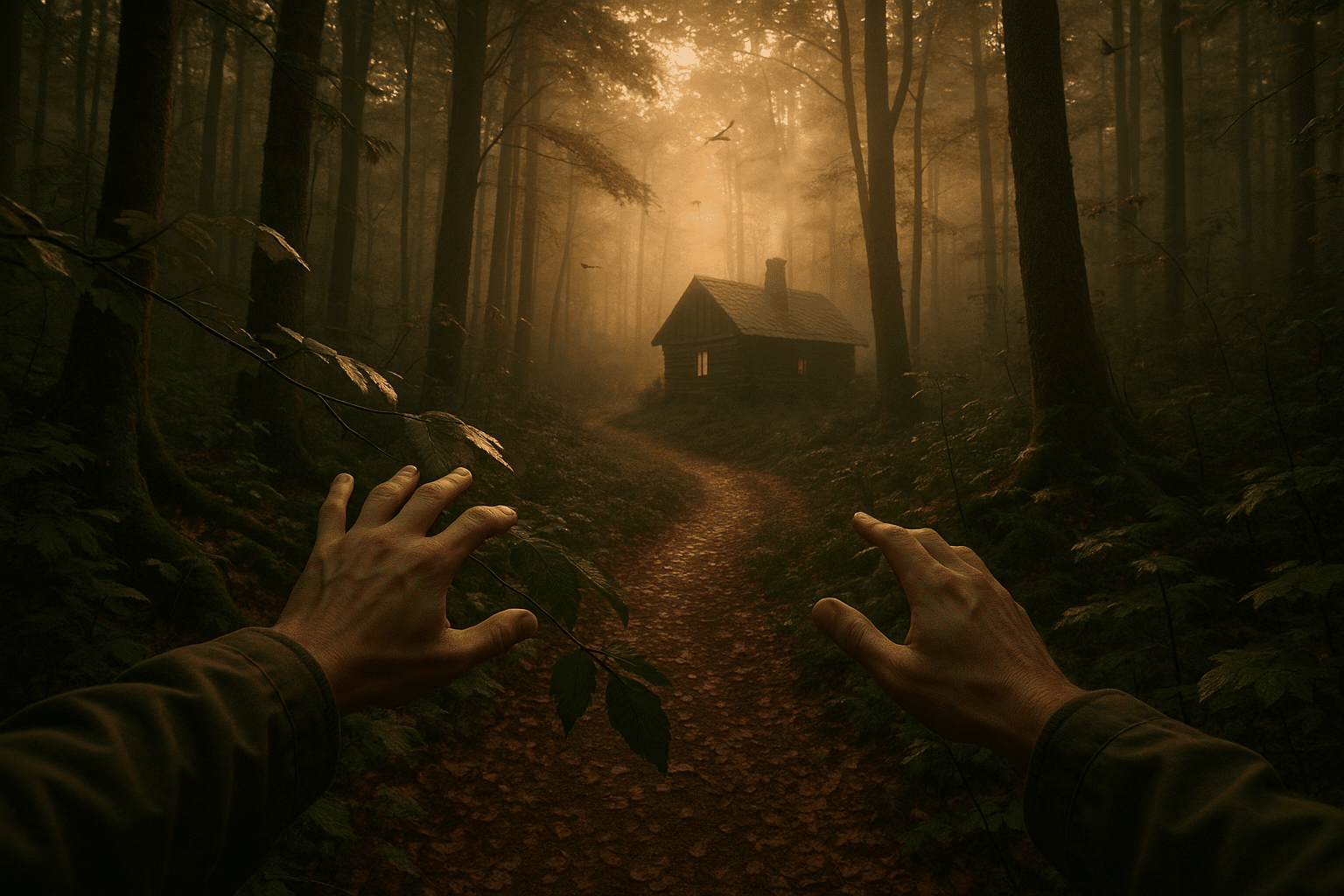In an era where digital storytelling is king, cinematography holds the scepter. It is the core around which stories revolve, lending them a palpable, visual, and emotional dimension that words often struggle to achieve. Among the multitude of cinematic techniques that seek to transcend the boundaries of conventional storytelling, one stands head and shoulders above the rest – the use of Point of View (POV) shots. 🎥
This distinctive camera angle, aimed at placing the audience directly in the shoes of the character, is a powerful tool in the arsenal of filmmakers, equipping them with the means to provide an immersive storytelling experience. No longer are you simply a spectator of the narrative, you become an active participant, experiencing the narrative through the eyes of the character.
But how can you effectively harness the potential of POV shots in your own storytelling? Whether you are an aspiring filmmaker, a seasoned cinematographer, or an enthusiast seeking to elevate your visual narrative, this article will serve as a comprehensive guide, delving into the world of POV shots and exploring how they can be used to enrich your storytelling. 📖
But before we dive into the deep end, it’s important to establish a strong foundational understanding of what POV shots are, their origin, and their impact on the cinematic landscape. The evolution of POV shots, from rudimentary attempts at audience engagement in early cinema to sophisticated and immersive storytelling tools in contemporary films, is a fascinating journey that we will embark on in the first part of this article. 🏞
In subsequent sections, we will then explore the technique behind POV shots, offering insights into the complexities involved in capturing them. This includes understanding the interplay between various cinematic elements, such as lighting, composition, and camera movement, and how they contribute to the creation of effective and engaging POV shots.🔍
The crux of the article will then delve into practical examples, analysing some of the most iconic POV shots in cinema and discussing how they were used to enhance storytelling. From the adrenaline-inducing shots in “Mad Max: Fury Road” to the bone-chilling sequences in “Halloween”, we will dissect how these movies used POV shots to transport audiences into the world of the characters and elicit powerful emotional responses. 🎞
In the final part of the article, we will discuss how you can incorporate POV shots into your own storytelling, offering practical tips and guidance. Regardless of whether you’re working with a high-end camera or a smartphone, our goal is to empower you with the knowledge and confidence to experiment with POV shots and add a new dimension to your storytelling. 🚀
Immerse yourself in this comprehensive exploration of POV shots, and be prepared to see your storytelling skills ascend to new heights. No longer will your narratives be mere tales to be told, they will become experiences to be lived. Are you ready to elevate your storytelling with cinematic POV shots? Let’s dive right in! 🏊♀️
Engulf in The Magic: Enhance Your Storytelling Through Cinematic POV Shots
🎬 A well-crafted movie is a blend of numerous elements, and among them, camera angles play a pivotal role. They are the silent narrators of the story, translating the director’s vision onto the screen. And when we talk about camera angles, Cinematic Point of View (POV) shots take storytelling to an elevated plane. Let’s delve into the world of cinematic POV shots and understand how they can enhance your storytelling.
But first, for a detailed insight into the technical aspects of creating cinematic shots, do watch this YouTube video “Cinematic Camera Movements” by PremiumBeat by Shutterstock. It illustrates some of the best cinematic camera movements that you can replicate to create impactful storytelling.
Understanding the Power of Cinematic POV Shots
What are cinematic POV shots? Imagine you are in a cinema, and the camera takes you directly into the mind of the protagonist, showing you the world through their eyes. That’s a cinematic POV shot. This camera angle creates an immediate and intimate bond between the audience and the character.
For instance, in the film “Birdman,” the entire story unfolds through a continuous POV shot, making the audience part of the protagonist’s journey. Not only does this technique provide a personal perspective, but it also allows for deeper emotional connection.
However, it’s important to note that POV shots aren’t just about “seeing” what the character sees; they’re about “feeling” what the character feels. Hence, a well-executed POV shot can be a powerful tool for storytelling.
Mastering the Art of Cinematic POV Shots
Creating cinematic POV shots requires a certain finesse and understanding of visual storytelling. There are several key factors to consider, such as the character’s perspective, the environment, and the emotional context.
The first step is to understand the character’s perspective. What does the character see, and more importantly, how do they see it? This will help you decide the angle and distance of the shot. For instance, a close-up POV shot can help convey the character’s emotional state, while a wide-angle shot can depict their environment.
Another critical factor is lighting. Good lighting can make or break a shot. It sets the mood and tone of the scene and can convey the character’s emotions. For instance, bright lighting can depict happiness or hope, while dim lighting can suggest sadness or fear.
Comparative Study of Different Cinematic Shots
To truly understand the power of POV shots, let’s compare them with other popular camera angles in the table below:
| Camera Angle | Description | Impact |
|---|---|---|
| POV Shot | The camera acts as the character’s eyes, showing their perspective. | Creates an intimate connection between the audience and the character. |
| Over-the-Shoulder Shot | The camera is positioned behind a character’s shoulder, focusing on another character or object. | Depicts a conversation or interaction, providing context. |
| Wide Shot | The camera captures a broad view of the setting or landscape. | Sets the scene and gives the audience a sense of the character’s environment. |
To dive deeper into the world of cinematic shots, check out the YouTube video “The Art of Camera Work” by the Academy of Motion Picture Arts and Sciences. It provides a detailed look into the technical and creative aspects of camera work.
Revolutionizing Storytelling with Cinematic POV Shots
With the evolution of technology, filmmakers are pushing the boundaries of storytelling through innovative camera techniques. Cinematic POV shots, with their immersive experience, are revolutionizing the way stories are told and perceived.
POV shots are not just about the visual spectacle; they’re about the emotional journey of the character. They have the power to transport the audience into the character’s world, allowing them to experience their triumphs, trials, and tribulations.
So, the next time you’re crafting a story, consider using cinematic POV shots. They could be the difference between a good movie and a cinematic masterpiece. So, pick up your camera, dive into the character’s world, and let the magic of storytelling unfold.
Resources to Learn More About Cinematic POV Shots
To further hone your skills in creating cinematic POV shots, here are some resources that can be of immense help:
- The YouTube video “Mastering the Art of Cinematic Shots” by Film Riot provides an in-depth tutorial on creating cinematic shots.
- The book “Cinematic Storytelling” by Jennifer Van Sijll offers detailed techniques and examples of effective visual storytelling.
- Online courses like “Cinematography Course: Shoot Expert Video on Any Camera” by Dale McManus on Udemy offer practical guidance and tips.
Remember, the best way to master the art of cinematic POV shots is through practice. So, keep experimenting, keep learning, and keep creating magical stories on screen.

Conclusion
After a comprehensive and insightful journey through the intricacies of Software Engineering and the Information Technology sector, we have finally arrived at the end of this article. Reflecting back on our discussion, let’s recount the key takeaways that we have gathered and learned about today.
Our exploration began with the fundamentals of software engineering, laying a firm foundation for a deeper understanding of the subject. We took a dive into the various software development methodologies, with a special focus on Agile, Scrum, and DevOps. These methodologies not only help streamline the development process but also improve the efficiency and effectiveness of the software produced.
We then ventured into the world of programming languages and frameworks, examining popular options like JavaScript, Python, and Java, as well as frameworks like Angular, Django, and Spring. These languages and frameworks are the building blocks of software development, empowering developers to create complex applications and systems.
In our next segment, we discussed the importance of testing in ensuring the quality of the software. We delved into various types of testing like unit testing, integration testing, and functional testing, emphasizing on their crucial role in delivering a reliable and robust software product.
Following that, we took a look at cloud technologies and their increasing influence in the IT industry. We discussed the advantages offered by cloud services like scalability, flexibility, and cost-efficiency, making a compelling case for their adoption.
Subsequently, we turned our attention to the importance of cybersecurity in today’s digital age. We outlined the various threats faced by organizations and individuals alike, and the necessary steps that need to be taken to mitigate these risks.
Finally, we delved into the future of software engineering, touching upon emerging trends like AI, machine learning, and big data, underscoring their potential to revolutionize the industry.
Having traversed through these complex yet fascinating topics, I hope this article has provided you with a well-rounded perspective on software engineering and IT. If you’re a student, professional, or enthusiast in this field, I hope that you’ve found this article not only informative, but also a source of inspiration for your future pursuits.
In the end, I encourage you all to continue exploring, questioning, and learning about these topics. Feel free to share your thoughts, experiences, or questions in the comments section below. I look forward to hearing your insights and fostering a rich discussion on these subjects. You can also share this article on your social media platforms to help spread knowledge and promote a culture of learning.
In case you wish to delve deeper into these topics, here are a few credible sources to assist you in your quest:
– [Software Engineering Institute](https://www.sei.cmu.edu/)
– [Information Systems Audit and Control Association](https://www.isaca.org/)
– [Cloud Security Alliance](https://cloudsecurityalliance.org/)
Remember, the realm of software engineering and IT is constantly evolving, and staying updated is crucial for success in this field. So keep learning, keep growing, and let’s embrace the future together! 😊🚀🌐
Finally, don’t forget to apply what you’ve learned in real-world scenarios. As they say, “Knowledge is of no value unless you put it into practice.” – Anton Chekhov. So, go ahead, build something amazing, solve complex problems, and make a difference in the world with your skills and knowledge. 🌟💪🌍
Stay curious, stay inspired, and keep coding!



